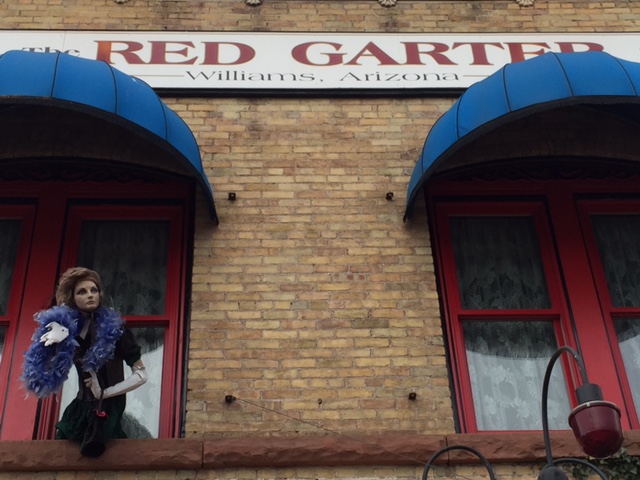Well, maybe not so much sojourn as it was 'passing through', but we did spend some time in both. I wish I could say we took in the sights, did a trail hike, maybe a Pink Jeep tour, stood in a vortex, watched the crazy BMX bikers on those thin Sedona trails, and ate at fine dining establishments. When you travel with seven people in rented van and you've got a schedule to stick to, you have to forego some of the finer things.
My goal was to get a feel for the Grand Canyon and Sedona for a longer trip in the future, while being able to see some of the impressive natural (and man-made) wonders that abound.
Sedona was stunning. Visually moving. It is not nearly as awe-inspiring as the Grand Canyon, it's just very pretty. The trip up 89A through smaller canyons, up switchbacks, along Oak Creek (which was full of swimmers and sunbathers) on our way to Williams, was full of even more nature's grandeur.
A view as we entered Sedona:
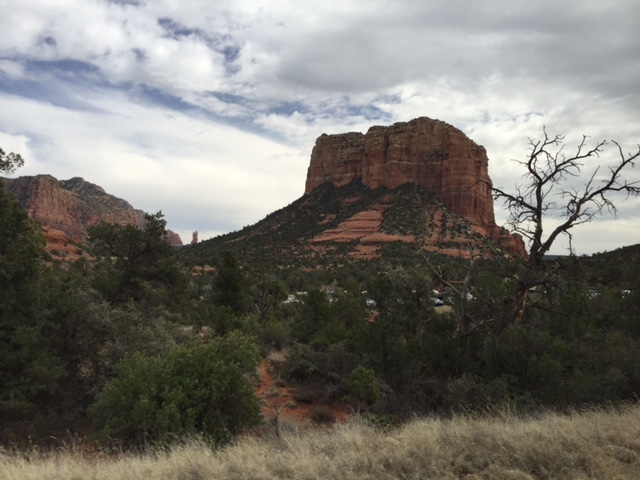
Chapel of the Holy Cross by Marguerite Brunswig Staude, who was a devotee and pupil of Frank Lloyd Wright. She had enlisted his son to build a church in Hungary, but WWII put a stop to it. So the plans were shifted to Sedona, where land was granted. I didn't get a chance to stop in, and could only see it from a distance. So I borrowed the picture beneath this one to give a better view.
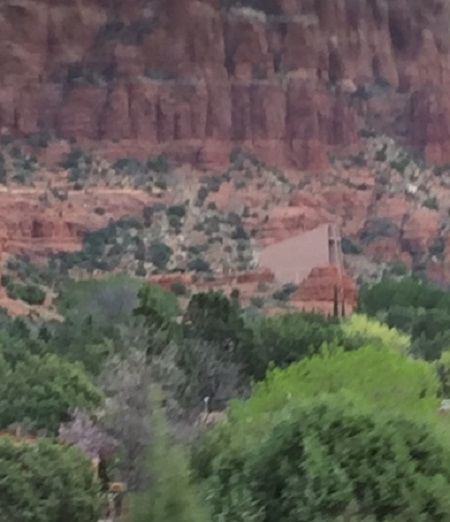
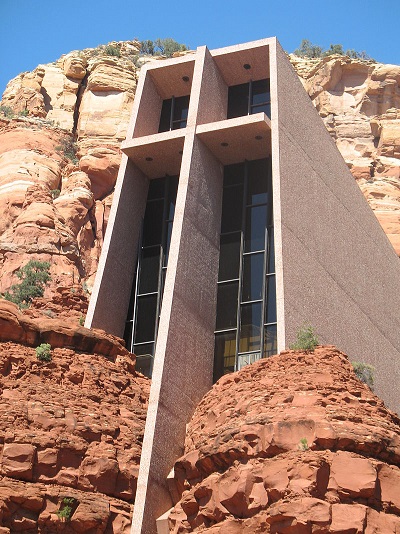
The original homestead of Theodore Carlton Schnebly, who essentially built, and named Sedona. He had applied to be a US Post Office, and when he was granted this post he had to name the town. So he named it after his wife, Sedona. Schnebly moved quite a bit, even back to Missouri, before returning to, and dying in, Sedona. I'm amazed he built his home next to a parking lot. He should have realized it wasn't conducive to relaxation.
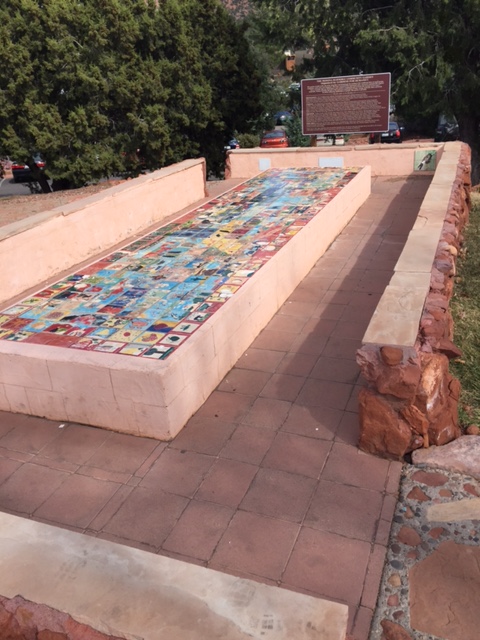
Snoopy Rock - so named for what I believe are obvious reasons...
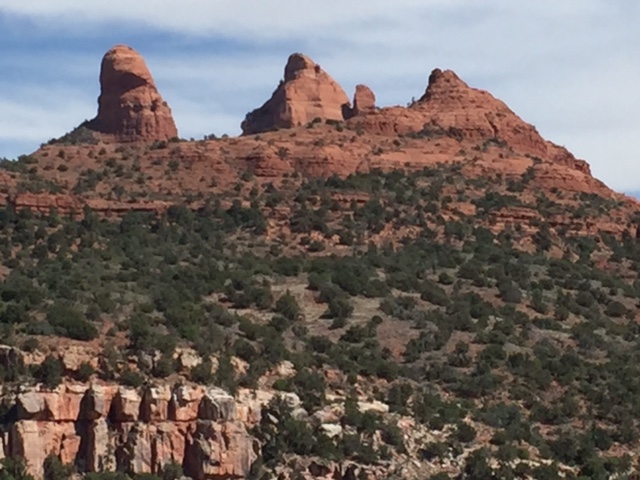
A view from the middle of town.
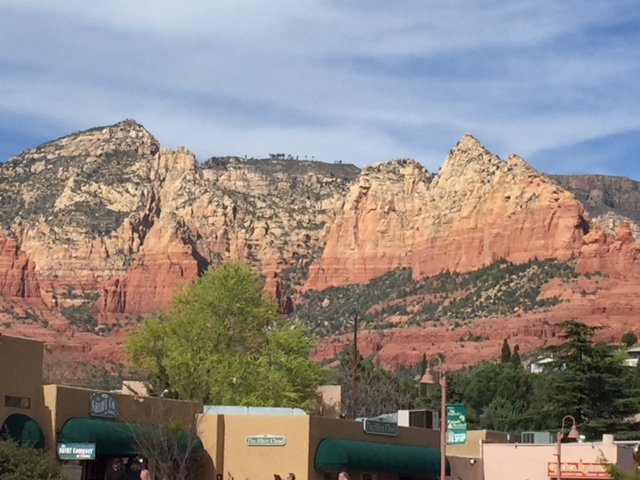
On to Williams, Arizona - which was the last town bypassed by interstate 40, in 1983. I have a tremendous love for old Route 66 towns, and try to visit them whenever I can. Williams is full of Route 66 kitsch, which is fine. Trying to hang on to a legacy with such enduring roots is difficult. Williams is the site of the "World Famous" Sultana Bar. I'm not sure what made it "World Famous" aside from the fact that it was one of the last dinner theaters in the West (think can-can dancers), but it's also famous because when the railroad was being built, the Chinese workers built tunnels under all the buildings. These tunnels still exist (I didn't get to see them, though I saw the entrance to one in the Canyon Club) and were used for various activities such as gambling by the railroad workers. During Prohibition, the tunnels were used to traffic liquor - with one tunnel actually leading directly to the police station.
We spent a few hours in the Canyon Club, a classic honky-tonk bar with extremely friendly locals and a fun barmaid. It was a very nice evening for just hanging out at a bar which still offered a glimpse of what travel entertainment Route 66 may have offered.
One other interesting note - Hop Sing's Chinese restaurant in Williams? Don't eat there. Mainly because it's a medical marijuana dispensary now.
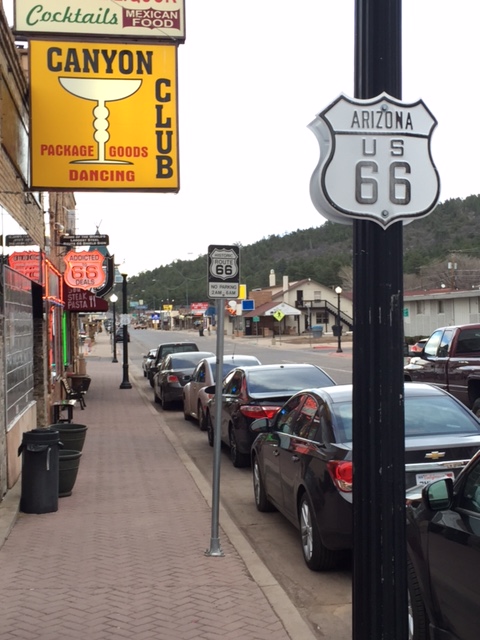
The ladies of the Red Garter were just hanging out the windows to welcome us.
